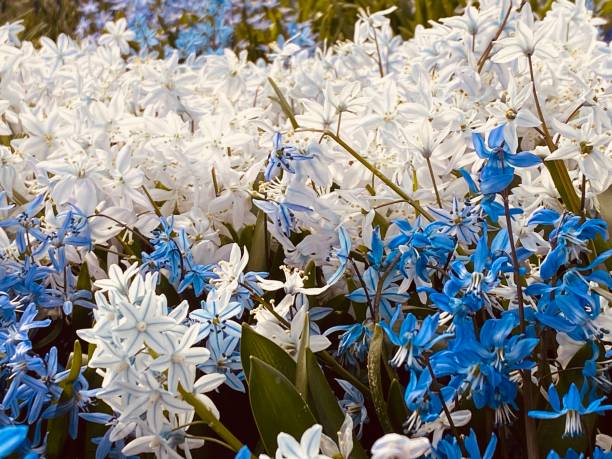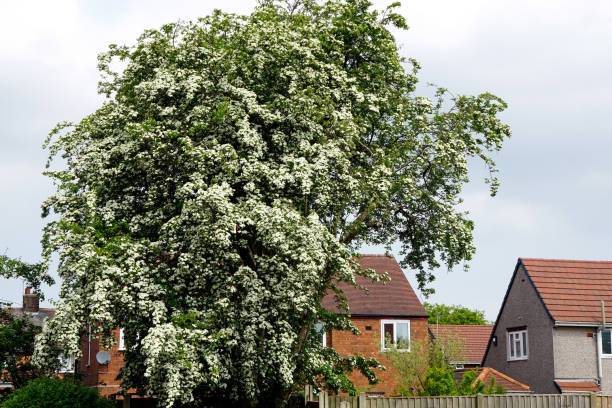Agapanthus or African Lilies are beautiful flowering plants that are used in gardens around the globe. Easy to grow and requiring little maintenance, they are great for adding color and texture to outdoor spaces. This blog will look at Agapanthus, its history, its characteristics, its care, and how it can be used in landscaping.
Agapanthus Plants: History
The Agapanthus plant is native to South Africa. It was introduced to Europe by Jan Commelin, a Dutch botanist, in the 17th Century. The name of the plant comes from two Greek words: “agape,” which means “love,” and “anthos,” which means “flower.” Since then, they have become very popular around the globe and are now grown in many different climates.
Agapanthus Plants: Characteristics
The flowers of the Agapanthus plant can be in a variety of colors, including blue, white, pink, red, and even black. The funnel-shaped flowers form clusters and are borne on sturdy, tall stems. The flowers bloom during the summer, and they can last several weeks. They have long, strap-like leaves that are strap-like. They grow in clumps and can be used as groundcover or in borders.
Agapanthus plants: How to grow them
Agapanthus, and especially Agapanthus Africa, is easy to grow. It can also thrive in different soil types and conditions. Here are a few tips to help you develop healthy Agapanthus in your garden.
Choose an area that receives plenty of sunshine: Agapanthus needs plenty of direct sunlight to thrive. Therefore, choose a place where the plant gets at least 6 hours of direct sun per day.
Plant well-draining, organic soil. Agapanthus prefers soils that drain well and are rich in organic material. If your soil has a clay-like texture, add compost or organic matter to it to improve drainage.
Water frequently: Agapanthus plants require regular watering. This is especially true during summer when they are blooming. Once a week or more often, if the soil is drying out rapidly, water deeply.
Fertilize every year: Agapanthus benefits from an application of balanced fertilizer each spring. For best results, follow the instructions on the package.
Divide plants every few years. Agapanthus can get overcrowded with time. It’s best to divide the plants every few seasons to maintain their health and encourage better blooming.
Agapanthus Care and Maintenance
Once established, agapanthus plants need minimal care. However, there are some things you can do to keep them looking great:
Deadhead spent flower: Remove spent blooms to encourage the plant’s production of more flowers.
Trim the foliage in autumn: Trim the foliage after it has naturally died back in the fall. This will prevent disease and encourage healthy growth in spring.
Protect against frost: Agapanthus may need protection from frost in colder climates. Cover the plants in mulch or frost blankets to protect them from cold.
Agapanthus Plants are Used in Landscaping
The Agapanthus plant is versatile and can be used for a wide range of landscaping projects. Here are some great ideas for incorporating Agapanthus into your garden.
Borders Create a colorful border around your garden bed using Agapanthus. When planted in large numbers, they look fantastic.
Containers Agapanthus is ideal for container planting, as it can be easily moved to meet your needs.
Mass Plantings: To create a dramatic impact, plant Agapanthus plants in large groups. This is a good idea for larger landscapes where the plants produce a striking effect.
Cut flowers: Agapanthus is a long-lasting flower that makes excellent cut flowers for indoor arrangements.
Planting near water features: Agapanthus is a good plant to use for poolside plantings since it can tolerate high humidity and drought.
Slope stabilization: Agapanthus has deep roots, which can help stabilize slopes.
Coastal Gardens: Agapanthus is often used as a plant in coastal gardens because it can tolerate salt sprays and windy conditions.
In conclusion
Agapanthus is a stunning addition to any garden. Its striking flowers are easy to care for, and they make a great accent. Agapanthus can be used as a colorful border plant or for large-scale planting. It is versatile and will thrive in many different growing conditions. These plants will bring beauty and color to your outdoor area for many years with the right attention and care.



